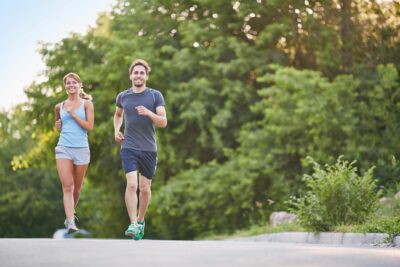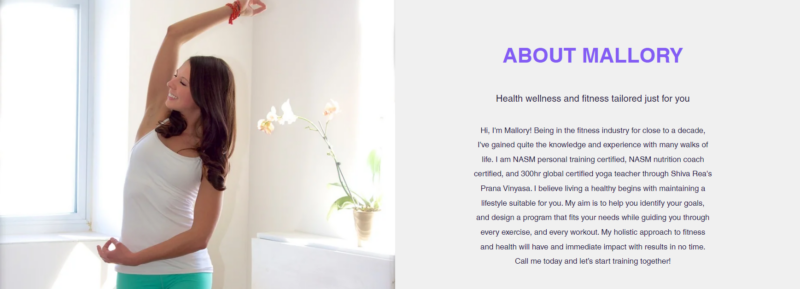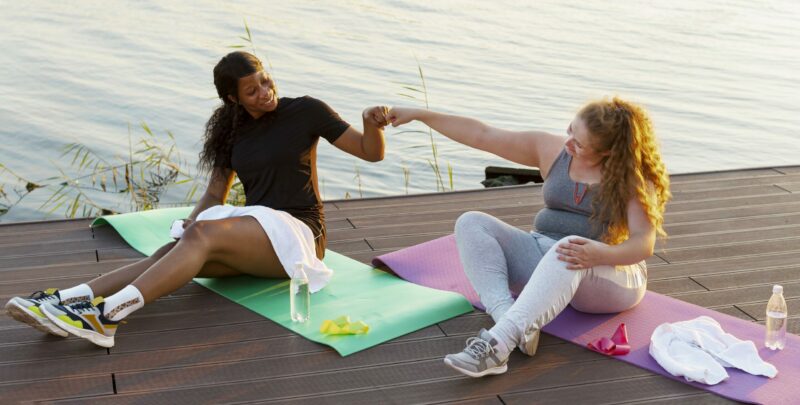At one time or another, most of us have thought about taking up running as a hobby or as a go-to form of exercise. Some have made that happen, some have tried it out for a while but eventually lost interest, and some just simply didn’t know where to start with a running program or might have been fearful of running injuries.
Running does have a lot of misconceptions surrounding it, and rightfully so. There really is a lot to take into consideration! While running doesn’t require fancy equipment, bats, balls, and a complicated scoring system, it is still a sport that requires safety precautions to keep the body safe, injury-free and reaching its next PR.
Any runner will gladly tell you all about how great the sport can be, but just make sure you have a lot of time free to listen to them before you pose the question to a runner. They will likely talk your ear off.
We’ve compiled a list of basic things to know about running in order to get started safely. Take a minute to read and let us know what you think.

The Basics of Running
Hydration and Dehydration
Being properly hydrated before, during and after a run of any length of time, distance or at any temperature is important.
Dehydration during cold weather running is a real issue. When you run in the cold you may not be sweating as much as a hot July day, but it doesn’t mean that you are not dehydrating yourself. Your lungs have to warm the air you breathe in. This uses a high level of moisture from your body, therefore, dehydrating you more than you think! Always rehydrate after a cold run, even if you don’t think you need it!
Mechanics of Running
Only half of the strength required to run comes from your body. The other half comes from the ground. This is called the ground reaction force.Your entire foot contacts the ground for .3 seconds (for a pace of 9:30 min / mile). That isn’t a lot of time, but you can really use the ground to “push” you back up. Take advantage of the recoil and you will minimize the work on your body and optimize your run! This comes from strengthening in the right way. Keep an eye out for more blogs in this Running Series for tips on strengthening specifically for running.
When you run, approximately 2.5 times your weight is felt on your body when you are in the single-leg stance phase (one foot on the ground) As your running shoe wears down, we modify our pattern around the wear of the shoe. This occurs around 200 miles. We actually change how we run simply because of our shoes.
Did you know? A strong gluteus maximus is more important for a runner than a strong quadriceps. Your hips and knees are connected, but the hip muscles play a larger role in proper running form and injury prevention. Stronger legs allow you to increase the force you put through them into the ground, this allows for improved speed through a longer stride length. A well-executed strengthening program is just as important as a good run!
Myths About Running
True or False?
Hydrating with Sports Drink is better than Water.This is False!
FALSE! If your run is less than an hour, water is the better option. If your run is longer than an hour, this is when you should use a sports drink to replace the electrolytes lost during a more intense run.
True or False?
Static Stretching (holding a position) before a run is best.False!
This one is FALSE also! Static stretching is best done after a run. Dynamic stretching is a better way to prepare before a run. Introduce walking lunges, squats, leg swings, high knees to your pre-run routine to warm up and you will thank us!
True or False?
Carb-loading the night before a long run or race is important.False!
Yikes, this one is FALSE too! Don’t send us angry mail for this one, promise we are just trying to help! Even though this is a great excuse to eat a huge plate of pasta (as if we need an excuse anyway!), this isn’t correct as it relates to helping our bodies prepare for long runs with sufficient energy from carbohydrates.
The best time to carb load is the week prior to the event (stopping 2 days prior). This allows your body the time to store up glycogen which is needed during heavy exertion. There really isn’t a need to alter your carb intake if your race/run is less than two hours.
True or False?
Barefoot running is best for everyone.False!
The best footwear (or use of no footwear) for running is a case-by-case decision. Our bodies are unique and we all have different gait patterns, strengths, weaknesses throughout them. What’s best for one person isn’t best for another. In other words, no two runners are made the same! Your specific running pattern and foot type should determine your approach to the right shoe versus barefoot running. We recommend seeing a Physical Therapist or a Fit Professional at Fleet Feet Syracuse to fit you for the best type of shoes.
Keep Reading…
The Great Outdoors | Unveiling The Benefits of Outdoor Exercise
In an age where digital screens dominate our lives, [...]
Your Relationship With Food | A Guest Blog by Emily Tills, MS RDN CDN of Nourished With Emily
Welcome to our guest blogger, Emily Tills, (Registered Dietitian [...]
Daily Stretching | A Guest Blog by Mallory Wisniewski Fitness
A Guest Blog By Mallory Wisniewski 300HR CYT & [...]
Spring into Action | Changes in Weather Change Your Activity Level
Spring is in the air, meaning more than just [...]
Sticking To Your Exercise Program | How To Not Fall Off The Treadmill (or Bike, or Rower…)
New Year's resolutions around fitness and exercise are incredibly [...]
10 Tips To Help You Get Up & Get Your Workout Done In The Morning
Are you struggling to peel yourself away from the [...]







